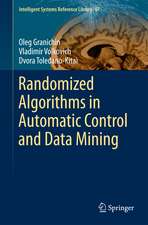Semantics
Autor András Kornaien Limba Engleză Hardback – 19 noi 2019
Preț: 481.17 lei
Preț vechi: 601.47 lei
-20% Nou
Puncte Express: 722
Preț estimativ în valută:
92.10€ • 100.08$ • 77.41£
92.10€ • 100.08$ • 77.41£
Carte tipărită la comandă
Livrare economică 16-22 aprilie
Preluare comenzi: 021 569.72.76
Specificații
ISBN-13: 9783319656441
ISBN-10: 3319656449
Pagini: 298
Ilustrații: XVII, 298 p. 33 illus., 8 illus. in color.
Dimensiuni: 210 x 279 x 26 mm
Ediția:1st ed. 2020
Editura: Springer International Publishing
Colecția Springer
Locul publicării:Cham, Switzerland
ISBN-10: 3319656449
Pagini: 298
Ilustrații: XVII, 298 p. 33 illus., 8 illus. in color.
Dimensiuni: 210 x 279 x 26 mm
Ediția:1st ed. 2020
Editura: Springer International Publishing
Colecția Springer
Locul publicării:Cham, Switzerland
Cuprins
Introduction.- Linear Spaces, Boolean Algebras, and First Order Logic.- Prolepsis.- Graphs and Machines.- Phenogrammar.- Lexemes.- Models.- Embodiment.- The Meaning of Life.
Recenzii
“This ambitious book presents a fresh, innovative approach to a traditional set of problems, the problems involving meaning in language. It is firmly anchored in the extensive literature on these problems. The exposition is mathematically rigorous but clearly written and accessible to the nonmathematical reader. I highly recommend this book for anyone working in or wanting to work in natural language semantics.” [Jerry R. Hobbs, University of Southern California]
“This textbook distinguishes itself from other books on semantics by its interdisciplinarity: it presents the perspectives of linguistics, computer science, philosophy and cognitive science. I expect big changes in the field in coming years, so that a broad coverage of foundations is the right approach to equipping students with the knowledge they need to tackle semantics now and in the future." [Hinrich Schütze, Ludwig-Maximilians-Universität (LMU) München]
“Very few people are aware of this elegant formalism of Eilenberg machines. People keep teaching presentations of finite state machines as kludgy imperative devices with tapes and reading heads instead of using relational notions. I have respect for Kornai's expertise on many topics, his sharp observations, the originality of the presentation, and its vividness.” [Gérard Huet, INRIA, Institut de France, Académie des Sciences]
“Very few people are aware of this elegant formalism of Eilenberg machines. People keep teaching presentations of finite state machines as kludgy imperative devices with tapes and reading heads instead of using relational notions. I have respect for Kornai's expertise on many topics, his sharp observations, the originality of the presentation, and its vividness.” [Gérard Huet, INRIA, Institut de France, Académie des Sciences]
Notă biografică
András Kornai is a mathematical linguist. He is a professor in the Department of Algebra of Budapest University of Technology and Economics, Chief Scientist at SecondMind Labs, and a senior research adviser at the Hungarian Academy of Sciences Computer and Automation Research Institute. His research interests include all mathematical aspects of natural language processing, speech recognition, and OCR. His homepage is at https://kornai.com/
Textul de pe ultima copertă
The focus of this textbook is the meaning of linguistic expressions, typically full sentences and longer texts. The author describes the conceptual and formal tools required for building semantic systems capable of understanding text, both for specific tasks such as information extraction and question answering and for broad undertakings such as the Semantic Web. The goal here is to present the fundamental ideas that working systems rest on, and this book is aimed primarily at Computer Science or Engineering students interested in developing semantic systems. The ideal reader is a hacker, a person who delights in having an intimate understanding of the internal workings of a system.
Caracteristici
Presents the conceptual and formal tools required for building semantic systems capable of understanding text Applications of the approach include information extraction, question answering, and the Semantic Web Appropriate for computer science and engineering students


























